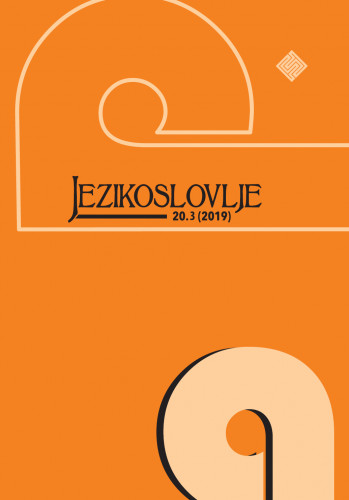Although the relationship between language proficiency and learner beliefs is generally viewed as weak, indirect, and distant, there are empirical findings which show that the relationship between syntactic complexity measures and language learning beliefs is statistically tangible. Since syntactic complexity is only one constituent of the linguistic complexity system, it seems plausible to question whether other constituents of the system are also in statistically measurable relationships with language learning beliefs. This research project explores the relationship between 25 lexical complexity measures (Lu 2012; 2014) and four subscales of language learning beliefs that are suggested for Horwitz’s (2013) Beliefs about Language Learning Inventory—BALLI 2.0 (Kovačević 2017). For three semesters (Fall 2014, Spring and Fall 2015), 152 freshman students at the International University of Sarajevo responded to BALLI 2.0 and wrote in-class exam essays which were converted into an electronic format. The results show 15 statistically significant correlation coefficients between 14 lexical complexity measures and three BALLI 2.0 subscales. Overall, it may be concluded that the relationship between lexical complexity measures and language learning beliefs is statistically detectable. The findings imply that the lexical complexity framework offers valuable opportunities for exploring how and to what extent particular individual differences manifest in foreign language production.; Iako se odnos između jezičnog umijeća i vjerovanja o učenju općenito opisuje kao slab i neizravan, postoje empirijski dokazi da je veza između mjernih jedinica sintaktičke složenosti i vjerovanja o učenju jezika statistički opipljiva. Budući da je sintaktička složenost samo jedan od podsustava jezične složenosti, potrebno je ispitati jesu li i ostali podsustavi u statistički mjerljivom odnosu s takvim vjerovanjima. U ovoj se studiji istražuje veza između 25 indeksa leksičke složenosti (Lu 2012; 2014) i četiri podljestvice vjerovanja o učenju jezika izvedene iz instrumenta Vjerovanja o učenju jezika (The Beliefs about Language Learning Inventory—BALLI 2.0, Horwitz 2013; Kovačević 2017). Tijekom tri semestra (zimski semestar akademske godine 2014./2015., te ljetni i zimski semestar akademske godine 2015./2016.) prikupljen je uzorak eseja 152 studenta prve godine preddiplomskih programa na Međunarodnom sveučilištu u Sarajevu. Rezultati pokazuju 15 statistički značajnih koeficijenata korelacije između 14 indeksa leksičke složenosti i tri podljestvice BALLI 2.0. Na temelju rezultata može se zaključiti da je veza između indeksa leksičke složenosti i vjerovanja o učenju stranog jezika statistički mjerljiva. Na temelju rezultate analize može se izvesti zaključak da konstrukt leksičke složenosti predstavlja koristan okvir za proučavanje načina na koji, i opsega u kojemu se individualne razlike manifestiraju u uporabi stranog jezika.
Sažetak

 Jezikoslovlje : 20,3(2019) / glavna urednica Gabrijela Buljan.
Jezikoslovlje : 20,3(2019) / glavna urednica Gabrijela Buljan.